Arts
Mind, monks and monkeys
Sahil Bhopal encourages the viewer to embrace the discipline of a monk and the curiosity of a monkey in order to attain equanimity at his ongoing exhibition.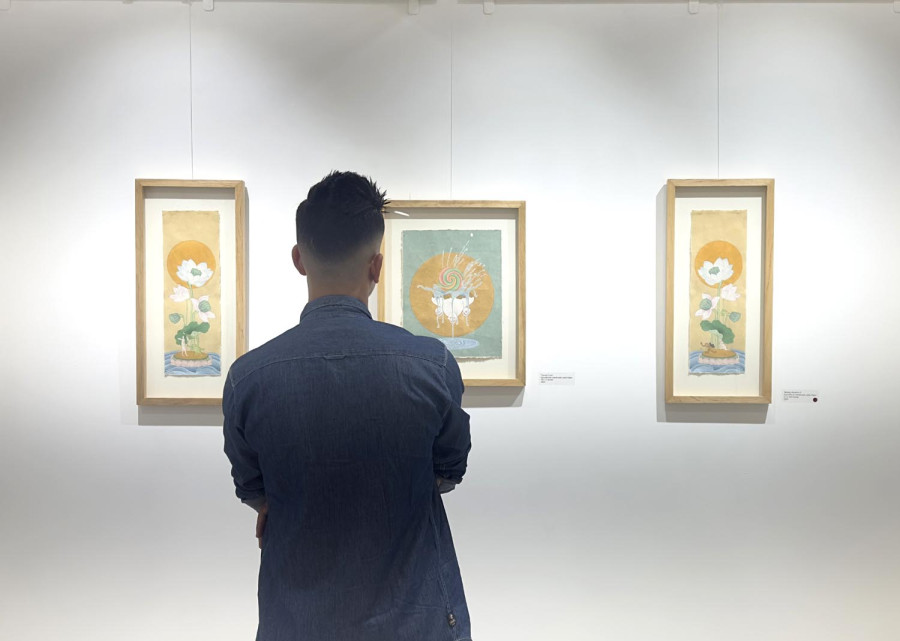
Anish Ghimire
Artist Sahil Bhopal grew up seeing almost everyone choose their careers between either doctor, engineer or pilot in the town of Kullu in Himachal Pradesh, India. Seeing this, he decided to become a pilot. He later realised that although his parents were keen on it, they couldn’t financially support his ambition. The prospect saddened him but it is true when they say that when one door closes, another opens.
On a lazy day, Bhopal found himself painting his room. This sparked his interest, and he decided to get professional training on it. He went to Tibetan master artist Noedup Rongae and learned under him. Under the tutelage of Tibetan master artist Noedup Rongae, Bhopal spent seven years at the Shambhala Art School within the Drukpa Kagyu monastery, immersing himself in the artistic lineage of Indian and Tibetan Buddhism.
His deep connection with the tradition is evident in his exhibition, ‘Heart-Mind Monkey,’ at Takpa Gallery in Lazimpat, Kathmandu. While his expertise lies in Thangka painting, the exhibition also features other installations where Bhopal’s imagination comes alive to “tell a story”.
In the ‘Muddy Situation’ series, we see a frog hiding behind a flower from a monkey. The rabbit is chasing the monkey away, rescuing the frog. Then out of gratitude, the frog gifts a flower to the rabbit. Contrastingly, in ‘Candy Crash’, tensions arise between the frog and the rabbit, hinting at a deteriorating relationship.

“We all have our addictions,” he says, adding, “As soon as the frog and the rabbit become aware of each other’s dark sides, conflict rises and the fairytale-like phase of the relationship ends.” In the centre of this painting, there’s a candy and growing up. Most kids have a thing for candy—it is sweet and addictive. It can also cause cavities. The candy represents what we turn sweet for and what, in turn, may harm us.
In ‘Stop, Listen, Go’, there’s a cool monkey playing a guitar. When Bhopal feels overwhelmed by everyday life, he stops whatever he is doing, picks his guitar and starts playing. He listens to the music and the song he sings, lets his thoughts flow and then gets back to doing what he was doing earlier. This method of switching off from the world for a while is depicted in the painting. He stops, he listens and then he moves on with his life.
There are a lot of canvases in the exhibition where he has portrayed his mind-eye, expressing what he feels about everyday life. In ‘I Don’t Know’, there are a couple of book-smart monkeys pressed under a pile of books in the background. They claim themselves to be the smartest. And in the forefront, there’s an even smarter monkey curiously eyeing the master, seeking to learn because the more we try to learn, the more we realise how much we don’t know.
The master is carefully trying to paint something and the monkey sits elegantly with a straight back. At the bottom, we see flowers and frogs—these elements of nature visit Bhopal’s canvases frequently.

Bhopal took me on a meditative journey with him as he walked me through his exhibition. Hearing him decode his paintings to me with such passion felt like he was letting me read his personal diary. Every brushstrokes, every element on the canvas held a personal story. Every character said something about the human mind—the monkey mind.
“Buddhist practice often views the ‘Monkey Mind’ with caution, seeing it as the source of our restlessness and distraction. However, I see its other facets too. To me, it’s filled with playfulness, warmth, gentleness, and, above all, curiosity,” he explains. What he explores in his work is embracing the monkey mind—embracing humanity, finding growth and joy and learning amid the chaos.
One obvious question regarding meditation is depicted in ‘Cultivation’. “How does one block negative thoughts while meditating?” is something many people ponder over. Bhopal has painted a question in this work. That question sits on a meditating monk’s neck. A monk is the centre figure in ‘Cultivation’, and around his neck are flowers and snakes. Each flower is followed by a snake, symbolising how positive thoughts can be followed by negative ones. Thoughts of the latter kind are pretty normal, says the artist.

We behave differently according to the environment we’re in. That is because we play different roles in our lives. This leaves us wondering who we are. What is our true self? We have different personalities. We carry them and pick which one to wear at the given moment. But what of our true selves? What can we become? Bhopal addresses this question with his work, ‘Equilibrium: Monk and Monkey’.
In this painting, Buddha sits between a monkey and a monk. Here, Buddha suggests that a person should embrace the features of both the monkey and the monk. We need the patience and discipline of a monk. We also need the childlike curiosity of a monkey. By integrating these aspects into our personality, we can achieve equilibrium—a state of balance.

We often talk about finding balance in life. Bhopal offers a path to attain that balance—by embodying the discipline of a monk and the curiosity of a monkey.
These pieces, accompanied by a singular Thangka painting, offer a unique experience at the gallery. “I believe that traditional techniques and materials—such as slow brushstrokes on Nepali Lokta paper and cotton canvas, prepared with ancient reverence—still hold relevance in our fast-paced world,” says Bhopal.
The exhibition is an invitation to view the familiar and the traditional through a lens of curiosity, to question our impulse to tame the untamed and to see the monkey mind as a friend, not a foe.
Heart-Mind Monkey
Where: Takpa Gallery, Lazimpat, Kathmandu
Timings: 11:00 am to 6:00 pm, closed on Mondays
When: Until April 14




 11.12°C Kathmandu
11.12°C Kathmandu
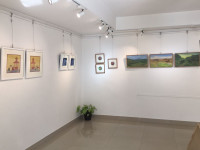
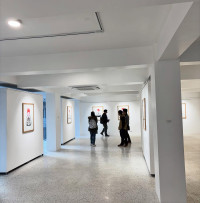
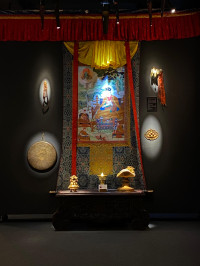
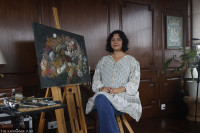
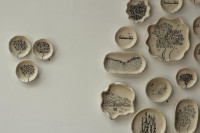
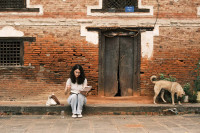
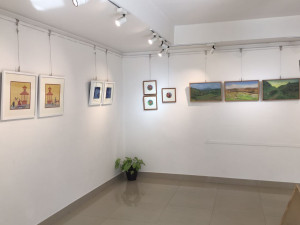
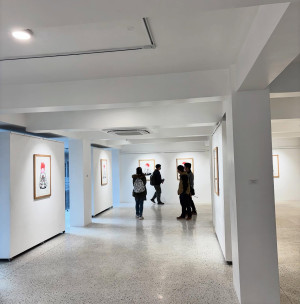


%20(1).jpg&w=300&height=200)

